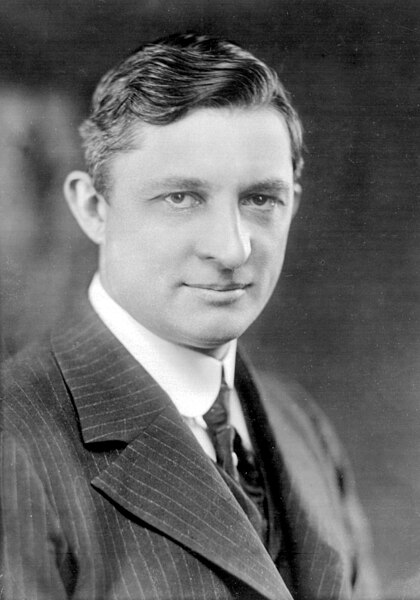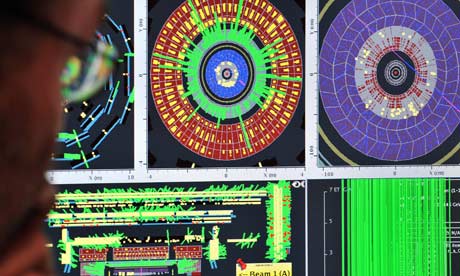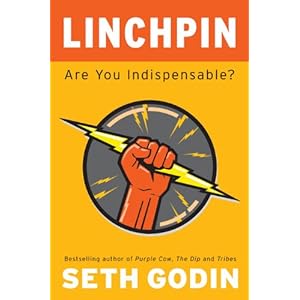 For watchers of the human condition, dissecting and analyzing our food culture is both fascinating and troubling. The global agricultural-industrial complex with its enormous efficiencies and finely engineered end-products, churns out mountains of food stuffs that help feed a significant proportion of the world. And yet, many argue that the same over-refined, highly-processed, preservative-doped, high-fructose enriched, sugar and salt laden, color saturated foods are to blame for many of our modern ills. The catalog of dangers from that box of “fish” sticks, orange “cheese” and twinkies goes something likes this: heart disease, cancer, diabetes, and obesity.
For watchers of the human condition, dissecting and analyzing our food culture is both fascinating and troubling. The global agricultural-industrial complex with its enormous efficiencies and finely engineered end-products, churns out mountains of food stuffs that help feed a significant proportion of the world. And yet, many argue that the same over-refined, highly-processed, preservative-doped, high-fructose enriched, sugar and salt laden, color saturated foods are to blame for many of our modern ills. The catalog of dangers from that box of “fish” sticks, orange “cheese” and twinkies goes something likes this: heart disease, cancer, diabetes, and obesity.
To counterbalance the fast/processed food juggernaut the grassroots International Slow Food movement established its manifesto in 1989. Its stated vision is:
We envision a world in which all people can access and enjoy food that is good for them, good for those who grow it and good for the planet.
 They go on to say:
They go on to say:
We believe that everyone has a fundamental right to the pleasure of good food and consequently the responsibility to protect the heritage of food, tradition and culture that make this pleasure possible. Our association believes in the concept of neo-gastronomy – recognition of the strong connections between plate, planet, people and culture.
These are lofty ideals. Many would argue that the goals of the Slow Food movement, while worthy, are somewhat elitist and totally impractical in current times on our over-crowded, resource constrained little blue planet.
Krystal D’Costa over at Anthropology in Practice has a fascinating analysis and takes a more pragmatic view.
[div class=attrib]From Krystal D’Costa over at Anthropology in Practice:[end-div]
There’s a sign hanging in my local deli that offers customers some tips on what to expect in terms of quality and service. It reads:
Your order:
Can be fast and good, but it won’t be cheap.
Can be fast and cheap, but it won’t be good.
Can be good and cheap, but it won’t be fast.
Pick two—because you aren’t going to get it good, cheap, and fast.
The Good/Fast/Cheap Model is certainly not new. It’s been a longstanding principle in design, and has been applied to many other things. The idea is a simple one: we can’t have our cake and eat it too. But that doesn’t mean we can’t or won’t try—and no where does this battle rage more fiercely than when it comes to fast food.
In a landscape dominated by golden arches, dollar menus, and value meals serving up to 2,150 calories, fast food has been much maligned. It’s fast, it’s cheap, but we know it’s generally not good for us. And yet, well-touted statistics report that Americans are spending more than ever on fast food:
In 1970, Americans spent about $6 billion on fast food; in 2000, they spent more than $110 billion. Americans now spend more money on fast food than on higher education, personal computers, computer software, or new cars. They spend more on fast food than on movies, books, magazines, newspapers, videos, and recorded music—combined.[i]
With waistlines growing at an alarming rate, fast food has become an easy target. Concern has spurned the emergence of healthier chains (where it’s good and fast, but not cheap), half servings, and posted calorie counts. We talk about awareness and “food prints” enthusiastically, aspire to incorporate more organic produce in our diets, and struggle to encourage others to do the same even while we acknowledge that differing economic means may be a limiting factor.
In short, we long to return to a simpler food time—when local harvests were common and more than adequately provided the sustenance we needed, and we relied less on processed, industrialized foods. We long for a time when home-cooked meals, from scratch, were the norm—and any number of cooking shows on the American airways today work to convince us that it’s easy to do. We’re told to shun fast food, and while it’s true that modern, fast, processed foods represent an extreme in portion size and nutrition, it is also true that our nostalgia is misguided: raw, unprocessed foods—the “natural” that we yearn for—were a challenge for our ancestors. In fact, these foods were downright dangerous.
Step back in time to when fresh meat rotted before it could be consumed and you still consumed it, to when fresh fruits were sour, vegetables were bitter, and when roots and tubers were poisonous. Nature, ever fickle, could withhold her bounty as easily as she could share it: droughts wreaked havoc on produce, storms hampered fishing, cows stopped giving milk, and hens stopped laying.[ii] What would you do then?
[div class=attrib]More from theSource here.[end-div]
[div class=attrib]Images courtesy of International Slow Food Movement / Fred Meyer store by lyzadanger.[end-div]
 The invisibility cloak of science fiction takes another step further into science fact this week. Researchers over at Physics arVix report a practical method for building a device that repels electromagnetic waves. Alvaro Sanchez and colleagues at Spain’s Universitat Autonoma de Barcelona describe the design of a such a device utilizing the bizarre properties of metamaterials.
The invisibility cloak of science fiction takes another step further into science fact this week. Researchers over at Physics arVix report a practical method for building a device that repels electromagnetic waves. Alvaro Sanchez and colleagues at Spain’s Universitat Autonoma de Barcelona describe the design of a such a device utilizing the bizarre properties of metamaterials.
 theDiagonal usually does not report on the news. Though we do make a few worthy exceptions based on the import or surreal nature of the event. A case in point below.
theDiagonal usually does not report on the news. Though we do make a few worthy exceptions based on the import or surreal nature of the event. A case in point below. [div class attrib]From Wilson Quarterly:[end-div]
[div class attrib]From Wilson Quarterly:[end-div] [div class=attrib]From the New Scientist:[end-div]
[div class=attrib]From the New Scientist:[end-div] The principle of a holographic universe, not to be confused with the Holographic Universe, an album by swedish death metal rock band Scar Symmetry, continues to hold serious sway among a not insignificant group of even more serious cosmologists.
The principle of a holographic universe, not to be confused with the Holographic Universe, an album by swedish death metal rock band Scar Symmetry, continues to hold serious sway among a not insignificant group of even more serious cosmologists. NASA’s latest spacecraft to visit Mars, the Mars Reconnaissance Orbiter, has made some stunning observations that show the possibility of flowing water on the red planet. Intriguingly, repeated observations of the same regions over several Martian seasons show visible changes attributable to some kind of dynamic flow.
NASA’s latest spacecraft to visit Mars, the Mars Reconnaissance Orbiter, has made some stunning observations that show the possibility of flowing water on the red planet. Intriguingly, repeated observations of the same regions over several Martian seasons show visible changes attributable to some kind of dynamic flow. Five years in internet time is analogous to several entire human lifespans. So, it’s no surprise that Twitter seems to have been with us forever. Despite the near ubiquity of the little blue bird, most of the service’s tweeters have no idea why they are constrained to using a mere 140 characters to express themselves.
Five years in internet time is analogous to several entire human lifespans. So, it’s no surprise that Twitter seems to have been with us forever. Despite the near ubiquity of the little blue bird, most of the service’s tweeters have no idea why they are constrained to using a mere 140 characters to express themselves. A recently opened solo art show takes an fascinating inside peek at the cryonics industry. Entitled “The Prospect of Immortality” the show features photography by Murray Ballard. Ballard’s collection of images follows a 5-year investigation of cryonics in England, the United States and Russia. Cryonics is the practice of freezing the human body just after death in the hope that future science will one day have the capability of restoring it to life.
A recently opened solo art show takes an fascinating inside peek at the cryonics industry. Entitled “The Prospect of Immortality” the show features photography by Murray Ballard. Ballard’s collection of images follows a 5-year investigation of cryonics in England, the United States and Russia. Cryonics is the practice of freezing the human body just after death in the hope that future science will one day have the capability of restoring it to life. [div class=attrib]From Scientific American:[end-div]
[div class=attrib]From Scientific American:[end-div] [div class=attrib]From Wired:[end-div]
[div class=attrib]From Wired:[end-div] Clarifying intent, emotion, wishes and meaning is a rather tricky and cumbersome process that we all navigate each day. Online in the digital world this is even more challenging, if not sometimes impossible. The pre-digital method of exchanging information in a social context would have been face-to-face. Such a method provides the full gamut of verbal and non-verbal dialogue between two or more parties. Importantly, it also provides a channel for the exchange of unconscious cues between people, which researchers are increasingly finding to be of critical importance during communication.
Clarifying intent, emotion, wishes and meaning is a rather tricky and cumbersome process that we all navigate each day. Online in the digital world this is even more challenging, if not sometimes impossible. The pre-digital method of exchanging information in a social context would have been face-to-face. Such a method provides the full gamut of verbal and non-verbal dialogue between two or more parties. Importantly, it also provides a channel for the exchange of unconscious cues between people, which researchers are increasingly finding to be of critical importance during communication.









 [div class=attrib]From Salon:[end-div]
[div class=attrib]From Salon:[end-div] It’s #$% hot in the southern plains of the United States, with high temperatures constantly above 100 degrees F, and lows never dipping below 80. For that matter, it’s hotter than average this year in most parts of the country. So, a timely article over at Slate gives a great overview of the history of the air conditioning system, courtesy of inventor Willis Carrier.
It’s #$% hot in the southern plains of the United States, with high temperatures constantly above 100 degrees F, and lows never dipping below 80. For that matter, it’s hotter than average this year in most parts of the country. So, a timely article over at Slate gives a great overview of the history of the air conditioning system, courtesy of inventor Willis Carrier.
 The next time you wander through an art gallery and feel lightheaded after seeing a Monroe silkscreen by Warhol, or feel reflective and soothed by a scene from Monet’s garden you’ll be in good company. New research shows that the body reacts to art not just our grey matter.
The next time you wander through an art gallery and feel lightheaded after seeing a Monroe silkscreen by Warhol, or feel reflective and soothed by a scene from Monet’s garden you’ll be in good company. New research shows that the body reacts to art not just our grey matter. Jonathan Jones over at the Guardian puts an creative spin (pun intended) on the latest developments in the world of particle physics. He suggests that we might borrow from the world of modern and contemporary art to help us take the vast imaginative leaps necessary to understand our physical world and its underlying quantum mechanical nature bound up in uncertainty and paradox.
Jonathan Jones over at the Guardian puts an creative spin (pun intended) on the latest developments in the world of particle physics. He suggests that we might borrow from the world of modern and contemporary art to help us take the vast imaginative leaps necessary to understand our physical world and its underlying quantum mechanical nature bound up in uncertainty and paradox. Two exciting races tracked through Grenoble, France this passed week. First, the Tour de France held one of the definitive stages of the 2011 race in Grenoble, the individual time trial. Second, Grenoble hosted the
Two exciting races tracked through Grenoble, France this passed week. First, the Tour de France held one of the definitive stages of the 2011 race in Grenoble, the individual time trial. Second, Grenoble hosted the  Both colliders have been smashing particles together in their ongoing quest to refine our understanding of the building blocks of matter, and to determine the existence of the Higgs particle. The Higgs is believed to convey mass to other particles, and remains one of the remaining undiscovered components of the Standard Model of physics.
Both colliders have been smashing particles together in their ongoing quest to refine our understanding of the building blocks of matter, and to determine the existence of the Higgs particle. The Higgs is believed to convey mass to other particles, and remains one of the remaining undiscovered components of the Standard Model of physics. Phew! Another heartfelt call to action from business blogger Seth Godin to become indispensable.
Phew! Another heartfelt call to action from business blogger Seth Godin to become indispensable.
 Hilarious and disturbing. I suspect Jon Ronson would strike a couple of checkmarks in the Hare PCL-R Checklist against my name for finding his latest work both hilarious and disturbing. Would this, perhaps, make me a psychopath?
Hilarious and disturbing. I suspect Jon Ronson would strike a couple of checkmarks in the Hare PCL-R Checklist against my name for finding his latest work both hilarious and disturbing. Would this, perhaps, make me a psychopath?
![John William Waterhouse [Public domain], via Wikimedia Commons](http://upload.wikimedia.org/wikipedia/commons/thumb/6/6b/John_William_Waterhouse_Echo_And_Narcissus.jpg/640px-John_William_Waterhouse_Echo_And_Narcissus.jpg) [div class=attrib]Echo and Narcissus, John William Waterhouse [Public domain], via Wikimedia Commons[end-div]
[div class=attrib]Echo and Narcissus, John William Waterhouse [Public domain], via Wikimedia Commons[end-div] [div class=attrib]From Evolutionary Philosophy:[end-div]
[div class=attrib]From Evolutionary Philosophy:[end-div] [div class=attrib]From Scientific American:[end-div]
[div class=attrib]From Scientific American:[end-div]